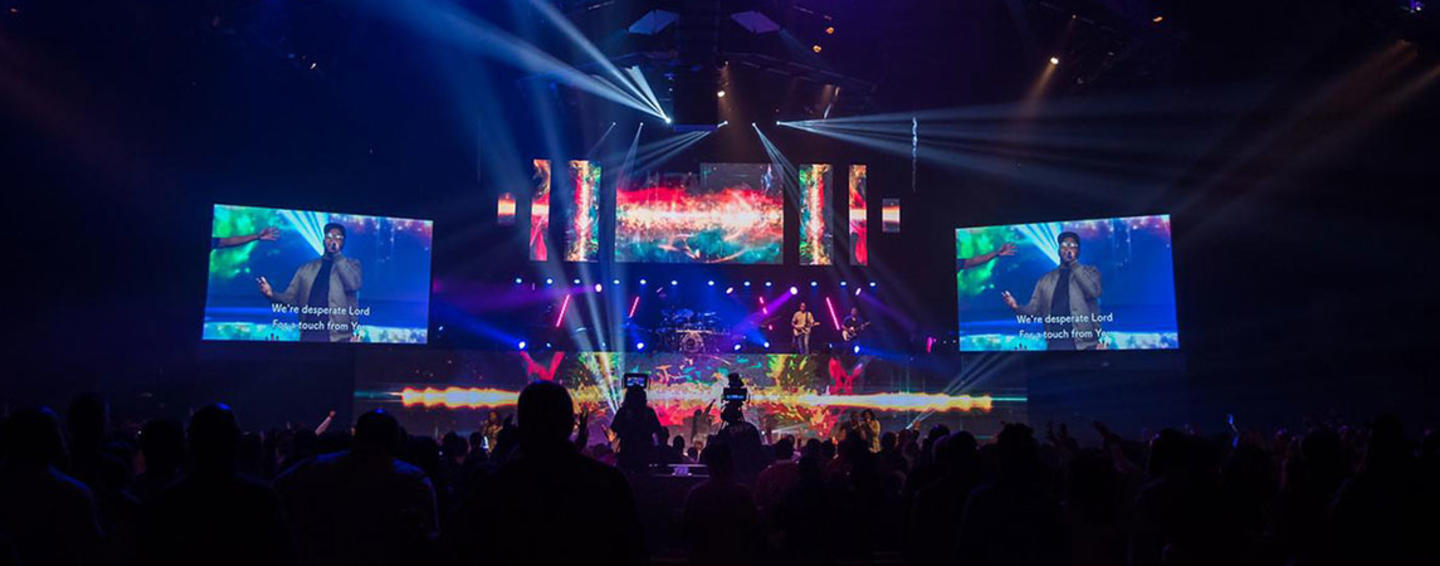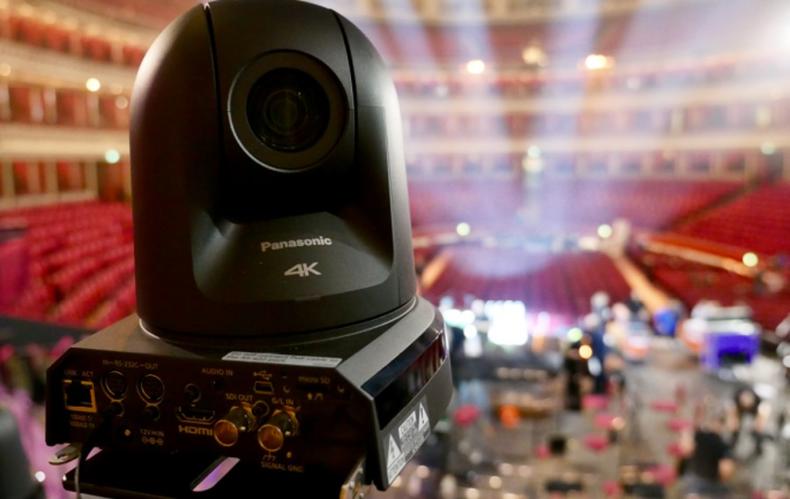Live Streaming for Places of Worship

Extending Worship Beyond the Walls
Deliver an immersive remote viewing experience for worshippers joining the service live and through on-demand video.
Why churches need to stream worship services
Producing an immersive, remote worship experience can extend the reach of your church beyond the local community and give congregants the opportunity to view missed services through on-demand video.
Essential gear for streaming church services
First and foremost, you need digital recording equipment that includes one or more streaming cameras — your video sources. You also need a video encoder, which is a software application or standalone hardware device that converts the audio-video signal into a web-friendly format and sends it to a streaming destination.
Your streaming destination will be a content delivery network (CDN) where people can view the church services online. Options include free CDNs, such as YouTube Live and Facebook Live, and a variety of paid streaming platforms.
Often taken for granted, stable internet service is the last piece of the streaming puzzle. You must have a high-speed internet connection capable of uploading your church live stream to the CDN without interruptions.
Live streaming camera options
To create a truly immersive, remote worship experience, you need to find the right camera solution. Adding streaming equipment to an existing building can be challenging. Where to set up the cameras? How many cameras are required? What type of camera fits best? Based on the size of your church, its budget constraints, and the intended scope of the broadcast, you can select the portable or pan-tilt-zoom (PTZ) cameras you need to engage your congregation online. Panasonic experts can help guide your video production setup - book your free consultation for your livestreaming video setup now.
Portable streaming cameras
Handheld cameras are extremely versatile, offering in-crowd portability, more varied shot options, the choice of long or wide-angle lenses, and in-camera recording.Portable cameras are typically mounted on a tripod or hand carried by a camera operator and are usually tethered by an SDI/HDMI cable back to the control room or streamed wirelessly by a Wi-Fi connection.
This option gives you maximum flexibility but requires a dedicated operator to stay with the camera and operate the zoom and manually pan and tilt.
PTZ streaming cameras
PTZ cameras feature quiet operation and single-cable IP connectivity for control, streaming and power. Since one operator is able to remotely control multiple cameras, PTZ solutions can be very economical and amenable to social distancing requirements.
While a camera operator needs a tripod and an intercom (comm) system to get the right shot, a single PTZ is a combination of a camera, a control system, with motors and electronics. PTZs can be mounted permanently on the wall, ceiling or other locations or they can also be mounted on tripods for temporary placement during events.
Camera features
Portable and PTZ streaming cameras come with a dizzying array of features that can confuse your selection process. When choosing a camera, always start with the basics:
- Resolution
High-definition (HD) video is the current online standard so any camera you choose should at least be capable of HD (720p) streaming. Depending on your production requirements, you might opt for a Full HD (1080p) or 4K camera. - Sensor size
Larger sensors capture more light, reducing noise and improving image quality. Your choice of sensor will depend on lighting conditions during a typical worship service. - Optical zoom
With optical zoom, a single camera can handle a greater number of shooting situations. Optical zoom is a must-have if you plan to do any close-ups. - Wide field of view (FOV)
Especially important for PTZ solutions, a wide horizontal FOV allows you to cover church services with fewer cameras. - Serial Digital Interface (SDI)
The professional standard for transmitting in-house digital video signals, SDI supports longer cable lengths than HDMI and features threaded connections that can’t be accidentally pulled out. - Network Device Interface (NDI)
NDI-compatible cameras can connect directly to a local area network (LAN), potentially simplifying equipment set-up and PTZ camera control, and enhancing your production capabilities. NDI (Network Device Interface) is a global plug and play network protocol that enables all NDI enabled devices to send and receive streaming video with control over a standard TCPIP network. There are two types: NDI and NDI|HX.
Once you have the basics covered, you should explore other helpful camera features such as Optical Image Stabilization (OIS), High Dynamic Range (HDR) support, and microSD card recording.
Why Panasonic?
Panasonic has a full range of products to support churches of all sizes with their technology requirements. From image magnification to live streaming, Panasonic offers projectors with advanced connectivity; professional displays; PTZ cameras and camcorders; switchers; and more.
Thanks to Panasonic’s support program for places of worship, setting up streaming equipment has never been so easy and affordable.With the superior image quality, wide FOV and high-performance zoom of Panasonic streaming cameras, you will enjoy greater installation flexibility, meaning you can place cameras in the most convenient, unobtrusive locations and get excellent coverage of your church services.
Unlike consumer products, which typically experience high failure rates in a production environment, Panasonic’s professional cameras are designed for continuous runtime so you can expect years of reliable, high-quality video output. In addition, Panasonic offers extended warranties on all streaming cameras and accessories, providing extra peace of mind. When you’re ready to discuss a live streaming solution for your church, please contact us for a free online consultation.
